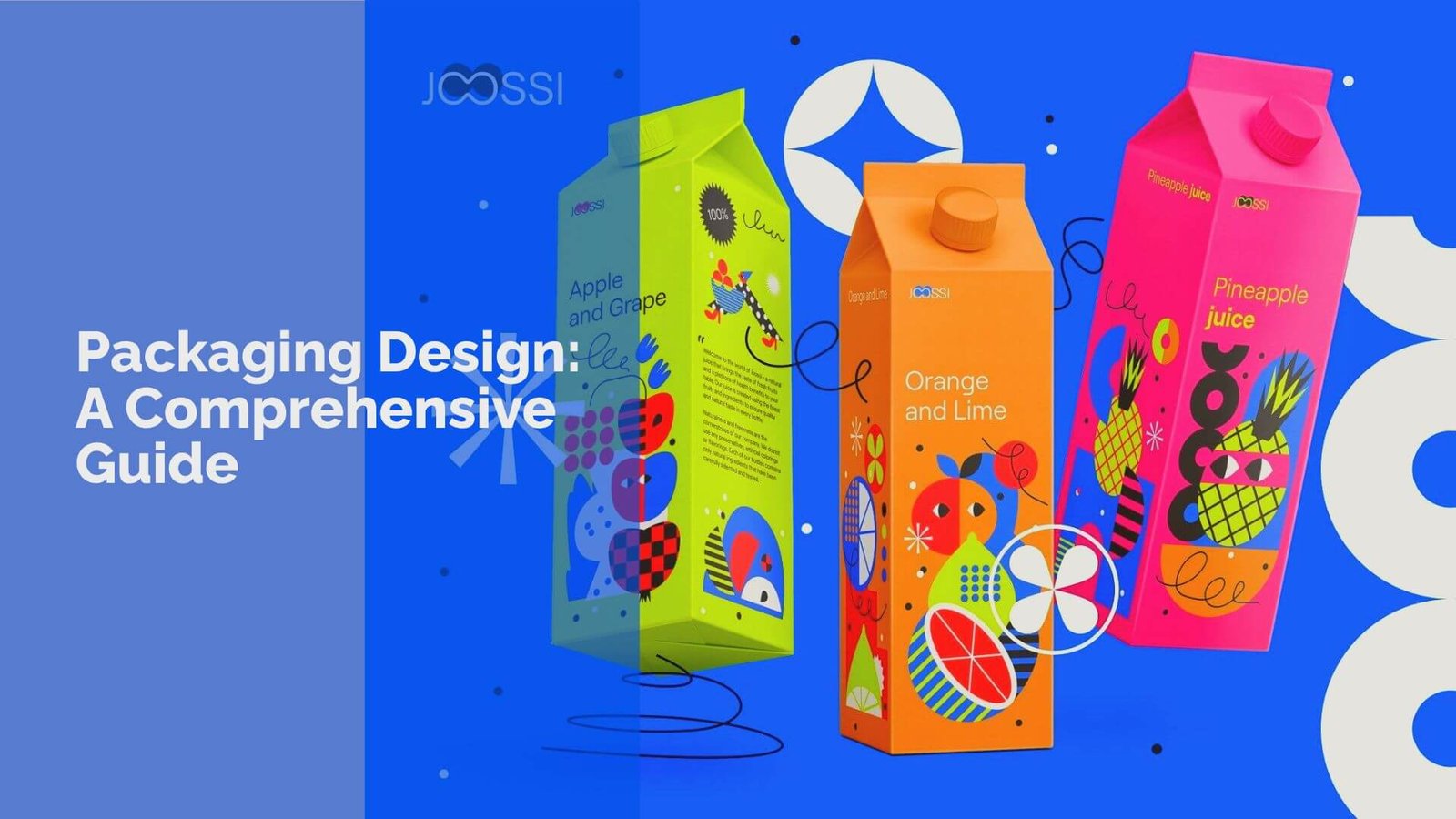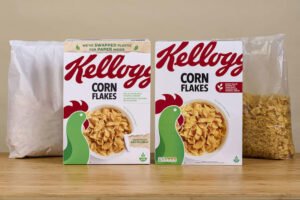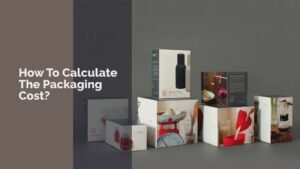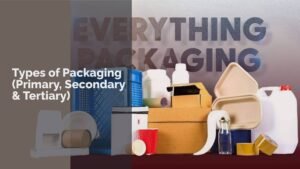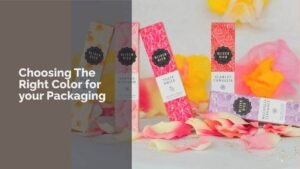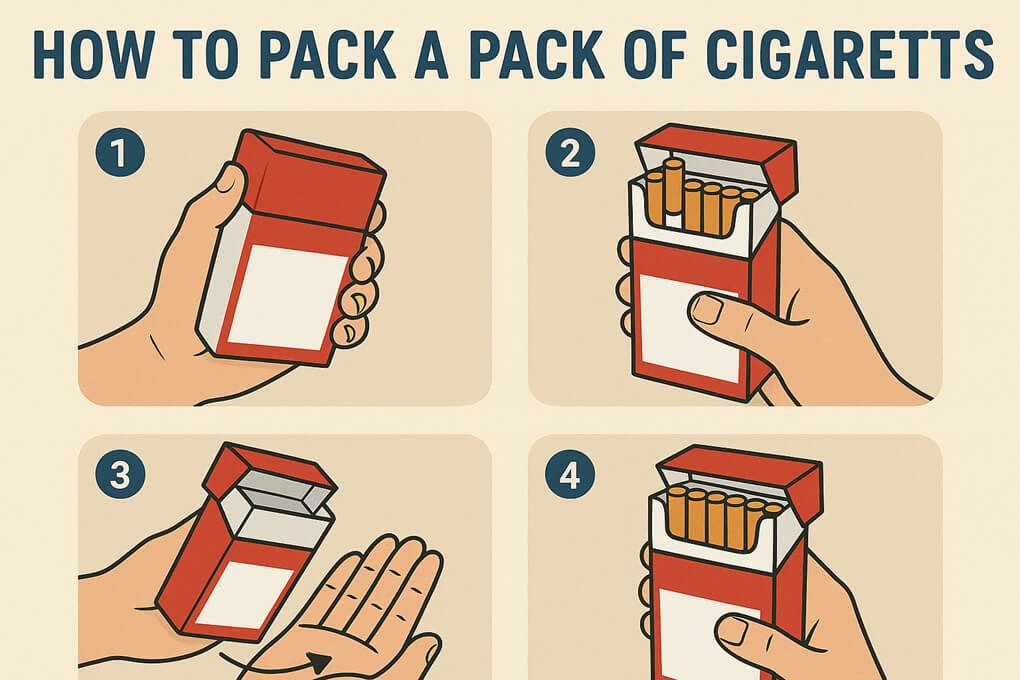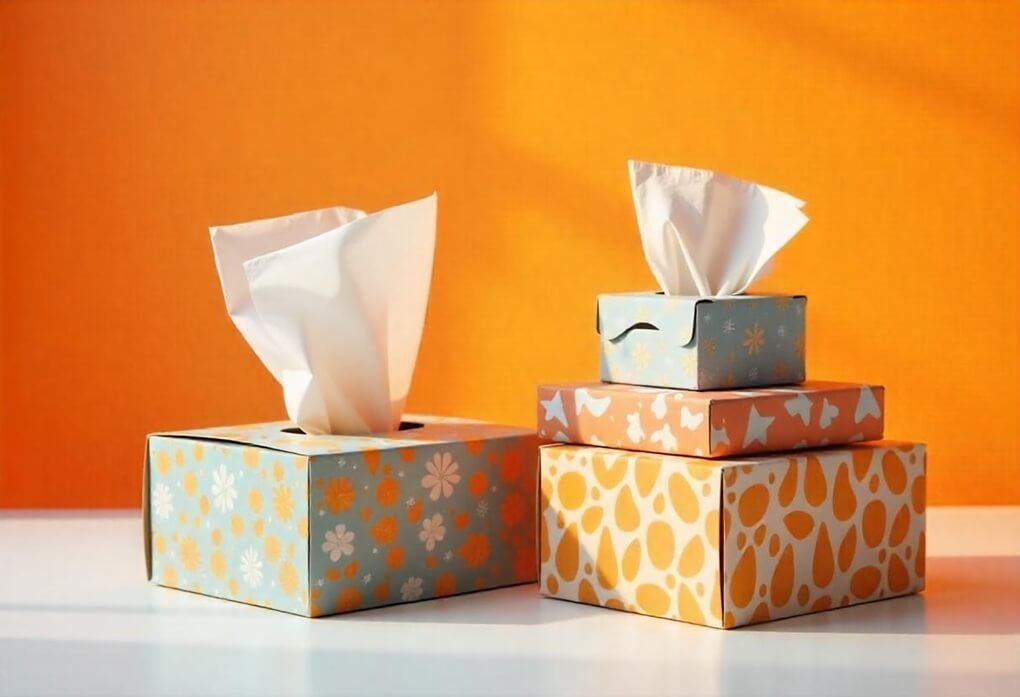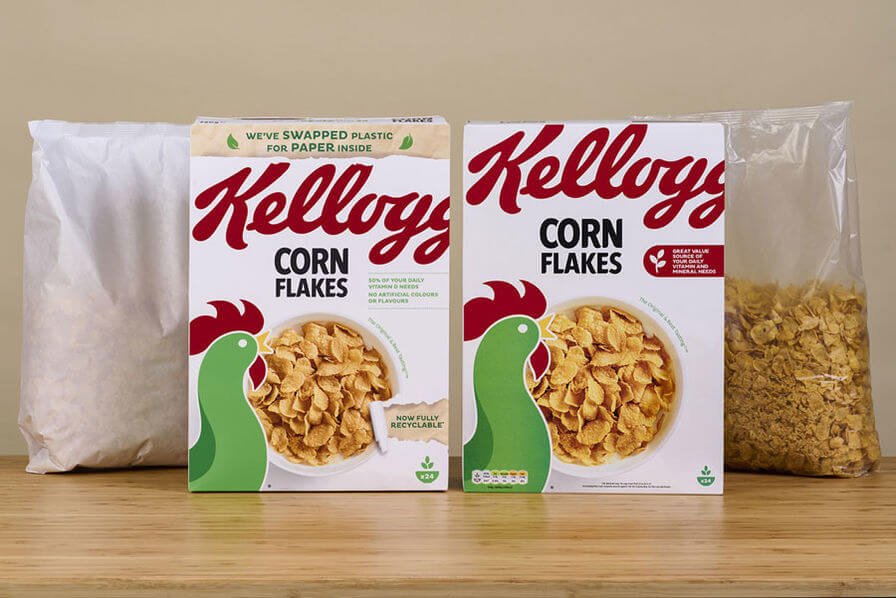Packaging design is a crucial element that shapes how consumers perceive a product. It encompasses not only the aesthetics but also the functionality of packaging, making it an essential part of product packaging design.
Effective packaging serves multiple purposes: it protects the product, communicates brand identity, and enhances the overall consumer experience.
Consider how a beautifully designed box can elevate a simple gift into a memorable experience. From custom packaging boxes to innovative packaging design ideas, the options are endless and can significantly impact consumer choices.
In this comprehensive guide, we will explore the intricacies of packaging design, including how to select the best design for your products and the latest trends that inspire creativity in the industry.
What Is Packaging Design?
Packaging design is how we create the outside of a product to make it look nice and work well. It includes choosing materials, colors, and shapes that help protect the product while also attracting customers.
For example, think about how a colorful cereal box catches your eye in the store. This is a great example of product packaging design at work.
Good packaging design is important because it helps tell the story of the product inside. It can show what the product is, how to use it, and why someone should buy it.
When you see a box that looks nice and has clear information, you feel more confident about your choice. This is why many companies use packaging design services to make sure their products stand out.
In addition, packaging can include fun graphics and cool fonts that make it even more interesting. A well-designed package can make a product more appealing and help it sell better.
Understanding packaging design can help you appreciate all the thought that goes into what you see on store shelves every day. So next time you pick up a product, take a moment to notice its packaging!
Role Of Design Packaging
Design packaging is very important because it helps protect products, promote brands, and inform customers. First, good packaging keeps products safe during shipping and storage.
For example, a sturdy box can prevent breakage and keep items secure. This is why companies pay attention to product packaging design; they want to make sure their items arrive in perfect condition.
Second, design packaging helps brands stand out. When you see a bright, colorful box or a cool bottle, it grabs your attention. This makes you more likely to buy the product.
Packaging can tell you about the brand and what makes it special. It can even show what the product does or how to use it.
Lastly, design packaging provides important information. It can include details like ingredients, instructions, and safety warnings.
This helps customers make informed choices about what they are buying. Design packaging is not just about looks; it plays a key role in protecting products, promoting brands, and providing useful information to customers.
Designing Packaging For Products
Designing packaging for products is an important process that goes beyond just putting a label on a box. It involves careful planning to make sure the packaging is attractive, functional, and suitable for the product inside.
Good packaging design helps protect the product, promotes the brand, and provides useful information to customers. This is why understanding how to design packaging effectively is essential for any business.
Graphic Design and Packaging
Graphic design and packaging are closely related. Graphic design focuses on how the visuals of a package look, including colors, images, and fonts. The goal is to catch the customer’s attention and communicate what the product is about.
For example, a bright cereal box with fun characters can attract kids and make them want to buy it. Using packaging design templates can help create a professional look without starting from scratch.
When designing graphics for packaging, it’s important to think about the brand’s identity. This means using colors and styles that match what the brand stands for.
A company that sells eco-friendly products might use green colors and nature-themed images. Hiring a packaging design maker or using online tools can help create eye-catching graphics that fit the brand’s message.
Graphic design plays a big role in packaging because it helps tell the story of the product while making it appealing to customers.
Physical Packaging
Physical packaging refers to the actual materials and structure used to hold a product. This includes choosing the right type of box or container that will keep the product safe during shipping and storage.
For example, if you are selling fragile items like glassware, you need sturdy boxes with padding to prevent breakage. Understanding packaging design size is also crucial; if a box is too big, it can waste space and materials.
When designing physical packaging, consider how it will be made. Some designs may look great but are difficult or expensive to produce.
It’s important to work within realistic limits so that your packaging can be manufactured easily. Researching what competitors use for their packaging design box can give you ideas about what works well in your industry.
Additionally, think about how customers will interact with the packaging. Is it easy to open? Does it have features like resealable tops for snacks? Good physical packaging enhances the user experience and encourages repeat purchases.
Marketing and Design
Using packaging as a marketing tool is known as packvertising. This means that your package not only holds the product but also helps sell it.
Good packaging should appeal to your target audience and clearly communicate what makes your product special. For example, if you have a new drink that is healthy and refreshing, your packaging should highlight those benefits with bright colors and clear text.
Packaging also helps build brand identity. When customers see your unique package on the shelf, they should recognize it immediately. This is why using consistent colors and logos across all products is important. Effective custom boxes design services can help create a strong visual identity that attracts customers.
Marketing through design packaging is essential because it connects with consumers emotionally. A well-designed package can make someone feel excited about trying a new product or remind them of happy memories associated with your brand.
By focusing on these elements, businesses can create packaging that not only protects their products but also drives sales and builds loyalty among customers.
Things To Consider Before Product Packaging Design
When creating packaging for your product, there are important things to think about. Your packaging is like the face of your brand; it tells customers who you are and what you offer.
Good custom packaging design helps attract buyers and makes them feel confident in their choice.
Here are some key elements to consider before starting your product packaging design.
Brand Logo
Your brand logo is one of the most important parts of your packaging. It represents your business and helps customers recognize your products.
When designing packaging, make sure your logo is clear and easy to see.
You can use a simple black logo on a kraft cardboard box, or you might choose a colorful and detailed design that covers the entire package. Whatever you choose, always use a high-quality vector file for your logo to avoid any blurriness or pixelation.
Including your logo on the front of the package helps create a strong brand identity.
This means that when customers see your logo, they will remember your brand and want to buy from you again.
Consistency is key; use the same logo across all your products and marketing materials. This will help build trust with your customers and make them feel connected to your brand.
Colors
Colors play a big role in packaging design because they can influence how people feel about your product.
Different colors can evoke different emotions; for example, blue often represents trust, while red can create excitement. When choosing colors for your packaging, think about what feelings you want to communicate about your brand.
Make sure to use colors that match your brand identity. If you have specific colors associated with your brand, include them in your packaging design.
This helps create a consistent look across all products, from the store to the website. Using a limited color palette can also make your packaging look more professional and appealing.
Additionally, consider how colors work together. High contrast between text and background colors can make information easier to read.
For example, if you have dark text, use a light background color for better visibility. Overall, choosing the right colors is essential for attracting customers and making a good impression.
Fonts
Choosing the right fonts is another important part of packaging design. Fonts can say a lot about your brand’s personality.
For example, playful fonts might work well for children’s products, while elegant fonts are better for luxury items. When selecting fonts, make sure they are easy to read from a distance.
You might want to use different fonts for different parts of the package. Your brand name should be prominent, while other information like ingredients or instructions can be in smaller text.
It’s also important to ensure that the font you choose has all the characters you need, especially if you sell in different countries.
Consistency in font usage is crucial too; using the same fonts across all marketing materials helps reinforce your brand identity.
If you’re unsure about which fonts to choose, consider hiring a graphic designer or using online tools that offer font suggestions based on your brand style.
Other Imagery
In addition to logos and colors, other imagery on your packaging can enhance its appeal. This includes any pictures or graphics that help tell the story of your product.
For example, if you’re selling organic food, using images of fresh fruits or vegetables can attract health-conscious consumers.
Imagery should be relevant to what you’re selling and align with your brand message. If there are symbols or logos that represent quality or safety standards (like “Made in USA” or eco-friendly certifications), include them on your packaging as well. These elements help build trust with customers by showing that you care about quality.
Remember that too much imagery can clutter the design and confuse customers. Aim for a balance where images complement the text without overwhelming it.
High-quality images make a big difference; blurry or poorly done graphics can turn customers away. Overall, thoughtful use of imagery can make your packaging stand out on store shelves and connect with consumers effectively.
By considering these elements—your brand logo, colors, fonts, and other imagery—you can create effective product packaging that not only protects but also promotes your brand successfully!
Packaging Materials & Design
When it comes to packaging products, choosing the right materials is very important. The materials you select not only protect the product but also represent your brand.
Different types of packaging materials have unique qualities that can make them suitable for various products. Here are some common packaging materials and their uses to help you make the best choice for your products.
Corrugated Cardboard
Corrugated cardboard is a popular and strong material used for packaging. It consists of three layers: two flat layers on the outside and a wavy layer in the middle called fluting.
This design gives it extra strength and makes it great for shipping heavy or fragile items. Many businesses use corrugated cardboard for products like electronics, clothing, and food items.
One of the best things about corrugated cardboard is that it is lightweight yet durable, which means it can protect items without adding too much weight to the shipping cost.
It also provides a blank canvas for packaging design, allowing brands to print their logos and colorful designs directly onto the box. This helps attract customers and create brand recognition.
Additionally, corrugated cardboard is eco-friendly because it is made from recycled materials and can be recycled again after use.
This makes it a great choice for companies that want to show they care about the environment. Overall, corrugated cardboard is a versatile and reliable option for many types of packaging needs.
Cardboard
Cardboard is another common packaging material that is often confused with corrugated cardboard.
While both are made from paper, regular cardboard is usually thinner and less sturdy than corrugated cardboard. It is often used for smaller items like cereal boxes, gift boxes, or lightweight products.
One of the advantages of using cardboard is that it can be easily cut and shaped into different forms, making it perfect for custom packaging designs.
Brands can create unique shapes that stand out on store shelves. Packaging design templates can help businesses create attractive designs quickly.
Cardboard is also relatively inexpensive compared to other materials, which makes it a popular choice for many businesses. However, it may not provide as much protection as corrugated cardboard, so it’s best suited for lighter items that won’t get damaged easily during shipping.
Furthermore, like corrugated cardboard, regular cardboard can be made from recycled materials, making it an eco-friendly option as well. Using cardboard packaging shows customers that your brand values sustainability while still providing a functional solution.
Paperboard
Paperboard is similar to cardboard but is generally thicker and more rigid. It is often used for products like cereal boxes, cosmetics, and other retail items. Paperboard can be easily printed on, allowing brands to showcase their logos and designs effectively.
One of the benefits of using paperboard is its ability to be molded into different shapes and sizes. This makes it a great choice for custom packaging solutions that need to fit specific products perfectly. Many companies use packaging design services to create eye-catching paperboard packages that attract customers.
Paperboard is also lightweight, which helps keep shipping costs down while still providing good protection for products.
Additionally, it can be made from recycled materials, making it an environmentally friendly option that appeals to eco-conscious consumers.
Paperboard offers a balance between durability and design flexibility, making it a popular choice in various industries. By choosing paperboard packaging, brands can create appealing designs while maintaining their commitment to sustainability.
Eco-Friendly Kraft Paper
Eco-friendly kraft paper is made from natural wood fibers and is known for its brown color and rustic appearance.
This type of paper is biodegradable and recyclable, making it an excellent choice for brands looking to reduce their environmental impact.
Kraft paper works well for various types of packaging, including bags, boxes, and wrapping paper.
Its sturdy nature makes it suitable for holding heavier items while still being lightweight enough to save on shipping costs. Many brands use kraft paper in their packaging design to convey a natural or organic image.
Using eco-friendly kraft paper also allows brands to connect with environmentally conscious consumers who prefer sustainable options.
Companies can print their logos or designs directly onto kraft paper using soy-based inks, which are less harmful to the environment than traditional inks.
Eco-friendly kraft paper provides an attractive and sustainable option for packaging products while promoting your brand’s commitment to the environment. By choosing this material, businesses can appeal to consumers who value eco-friendly practices without sacrificing quality or style.
Rigid Packaging
Rigid packaging refers to strong containers that do not change shape easily when filled with products.
This type of packaging includes boxes made from thick cardboard or plastic containers used for high-end products like electronics or cosmetics.
Rigid packaging offers excellent protection against damage during shipping because it keeps its shape well.
It also provides a premium feel that can enhance the customer experience when unboxing a product. Many brands use rigid packaging as part of their product packaging design strategy to create a luxurious impression.
Another advantage of rigid packaging is its ability to hold intricate designs and graphics without losing quality. Brands can showcase their logos and product information clearly on rigid packages, which helps attract customers’ attention in stores.
However, rigid packaging can be more expensive than other types of materials due to its sturdiness and manufacturing process. Despite this cost, many businesses find that the benefits outweigh the price because of the added value it brings to their products.
In summary, rigid packaging provides durability and visual appeal that enhances brand identity while ensuring product safety during transit.
Polythene Packaging
Polythene packaging, often known as polyethylene or plastic packaging, is widely used due to its lightweight nature and waterproof properties. This type of material is commonly found in bags, wraps, and mailers used by many businesses today.
One key advantage of polythene packaging is its ability to protect products from moisture and dirt during shipping.
This makes it ideal for items like clothing or food that need protection from environmental factors. Polythene bags are often used in packaging design because they are easy to seal and keep contents secure.
Another benefit of polythene packaging is its flexibility; it can be produced in various thicknesses and sizes depending on the product’s needs. Many brands choose polythene mailers as an alternative to traditional boxes because they take up less space during shipping.
However, there are concerns about the environmental impact of plastic packaging since it does not decompose easily like other materials such as cardboard or paperboard.
To address this issue, many companies are now exploring ways to use recyclable polythene or alternative biodegradable materials in their packaging design services.
Packaging Design Inspiration
Finding the right inspiration for packaging design can make a big difference in how customers perceive your product.
Great packaging not only protects the product but also tells a story about your brand.
Here are some exciting ideas for packaging design that can help your products stand out on the shelves.
Innovative Packaging Supplies
Innovative packaging supplies are all about creativity and new ideas. This type of packaging can include unique shapes, materials, or features that surprise customers.
For example, some brands use transparent windows in their boxes to show off the product inside. This helps customers see what they’re buying and makes the packaging more interesting.
Another innovative idea is to create packaging that can be reused or repurposed. For instance, a shoe company called Saucony encouraged its customers to design their own shoe boxes.
The winning designs were printed on actual boxes, which made customers feel involved and excited about the brand. This kind of engagement is a great way to connect with your audience while showcasing packaging design creativity.
Using sustainable materials is also an important trend in innovative packaging. Many companies are now focusing on eco-friendly options that reduce waste and help the environment.
By choosing innovative packaging supplies, brands can show their commitment to sustainability while attracting environmentally conscious consumers.
Minimalistic Design
Minimalistic design is a popular trend that focuses on simplicity and clean lines. This style often uses fewer colors and elements to create a sleek look that is easy to understand.
Minimalism originated in places like Scandinavia and Japan, where less is often seen as more.
In minimalistic packaging, brands usually feature a simple logo and limited text.
For example, a kraft mailer box with just a handwritten logo can look elegant and professional. This type of design helps convey the brand’s message without overwhelming customers with too much information.
Minimalistic design is not only visually appealing but also cost-effective. It can save money on printing and materials while still creating an attractive package.
Many businesses find that this approach works well across different industries, from food products to cosmetics.
Using minimalism in your packaging design can help your brand stand out by making it look modern and sophisticated. Customers appreciate clean designs that are easy to recognize, which can lead to increased sales and brand loyalty.
Design Inspired by Vintage Aesthetics
Design inspired by vintage aesthetics brings back elements from the past to create a sense of nostalgia. This style often includes classic fonts, colors, and patterns that remind people of earlier times, especially from the late 19th to early 20th centuries.
Many brands use vintage-inspired packaging to connect with customers emotionally. For example, Captain Fawcett’s beard oil features old-timey designs that evoke feelings of tradition and craftsmanship.
This kind of packaging can make customers feel like they are buying something special that has stood the test of time.
Food products like chocolate and tea often use vintage designs as well. These packages can look elegant and inviting, making them appealing gifts or treats.
By using vintage aesthetics in packaging design, brands can create a unique identity that sets them apart from competitors.
Vintage-inspired packaging helps tell a story about the product while creating a strong emotional connection with consumers. It’s an effective way to attract attention and build trust in your brand.
Pattern-Based Packaging
Pattern-based packaging uses repetitive designs or textures to create visual interest. Our brains are naturally drawn to patterns, which makes them effective for catching attention on store shelves. Patterns can evoke feelings or memories, making products more appealing to customers.
For example, you might see patterns that mimic natural textures like wood or fabric on packaging for organic products.
These designs help communicate the product’s qualities while making it look attractive. Using patterns in your packaging design can create a unique identity for your brand.
When designing pattern-based packaging, consider how the pattern will work with other elements like text and colors.
A well-designed pattern should complement the overall look without overwhelming it. Using dielines—flat templates of how the package will look—can help visualize how patterns will fit on different surfaces.
Brands can also experiment with different styles of patterns, such as geometric shapes or floral designs, to find what resonates best with their audience.
By incorporating patterns into your packaging design, you can create memorable products that stand out in a crowded market.
Culturally Inspired Design
Culturally inspired design uses elements from specific cultures to create meaningful connections with consumers. This approach involves incorporating shapes, colors, and imagery that reflect cultural traditions or celebrations.
For example, using patterns inspired by traditional art forms can make products feel special and relatable to certain audiences.
Limited edition items often benefit from culturally inspired packaging during holidays or festivals. For instance, brands might create special designs for Diwali or Chinese New Year that resonate with those communities. This not only shows respect for different cultures but also helps attract customers who appreciate cultural significance in products.
When using culturally inspired design in packaging, it’s important to be sensitive and respectful towards the culture being represented.
Researching cultural symbols and meanings ensures that the design honors its origins rather than appropriating them.
Culturally inspired design enriches packaging by connecting products with consumers’ identities and traditions. It creates a sense of belonging while helping brands stand out in diverse markets.
Contemporary Design and Packaging
Contemporary design refers to current trends in packaging that reflect modern tastes and preferences.
This style often includes bold colors, unique shapes, and innovative materials that catch consumers’ eyes. Contemporary packaging aims to create an engaging experience for customers while effectively communicating brand messages.
One trend in contemporary design is using images or patterns spread across multiple surfaces of the package.
This technique draws attention to busy areas while allowing other parts of the package to remain simple and clean. Using contrasting colors helps highlight important information about the product.
Another aspect of contemporary design is incorporating humor or wit into packaging messages. Clever phrases or playful graphics can make customers smile and feel more connected to the brand.
For example, some snack foods use funny slogans on their bags to create a lighthearted experience when opening them.
By embracing contemporary design in your packaging, you can appeal to modern consumers who appreciate creativity and innovation in products they purchase.
Staying updated on current trends will help ensure your packaging remains relevant and engaging in today’s fast-paced market.
Product Shapes
The shape of your product packaging plays an essential role in both functionality and visual appeal. Unique shapes can make products stand out on store shelves while also ensuring they are secure during shipping.
For instance, cylindrical containers might be used for beverages while rectangular boxes are common for snacks or electronics.
Choosing the right shape also involves considering how well it protects the product inside. Packaging must keep items safe from damage during transport while being easy for customers to handle at home or in stores.
Using fillers like tissue paper or bubble wrap inside boxes helps secure items further during shipping.
Additionally, creative shapes can enhance branding opportunities; for example, custom-shaped boxes can reflect what’s inside them—like a milk carton shape for dairy products!
By thinking outside traditional shapes when designing your product packaging, you can create memorable experiences for consumers that encourage repeat purchases.
How To Pick The Best Design For Packaging For Your Products?
Choosing the right design for your product packaging is essential for attracting customers and ensuring your product stands out. Before you start designing, there are three important questions you need to answer:
What is the product? Who’s buying the product? How are people buying the product? Understanding these factors will guide you in creating effective packaging that meets your brand’s needs.
1. What is the Product?
The first step in designing packaging is to clearly understand what the product is.
Ask yourself questions like: What size is it? What materials is it made of? Is it fragile or durable? Knowing these details helps you decide what type of packaging will work best.
For example, if you are selling a delicate item, you will need stronger packaging to keep it safe during shipping.
If your product is large or has an unusual shape, you might need custom packaging solutions instead of standard boxes. This ensures that the product fits well and doesn’t move around inside the package.
Additionally, consider how your product will be displayed in stores or online. The right packaging design can make your product more appealing and help customers quickly understand what they are buying.
Knowing your product’s characteristics is crucial for selecting the best packaging design that protects it while also attracting buyers.
2. Who’s Buying the Product?
The second question to consider is who’s buying the product. Understanding your target audience helps you create packaging that appeals directly to them.
Think about factors like age, gender, and interests. For example, if your product is aimed at children, bright colors and fun designs will attract their attention.
On the other hand, if you are selling luxury items for adults, elegant colors and sophisticated designs might be more appropriate.
It’s also important to consider the values of your target audience. Are they environmentally conscious? If so, using eco-friendly materials in your custom packaging design can make a positive impression on them.
Additionally, if your audience includes older adults, ensure that the text on your packaging is easy to read with larger fonts.
By knowing who your customers are, you can create packaging that resonates with them and encourages them to choose your product over others.
3. How Are People Buying the Product?
The final question is how are people buying the product? Are they purchasing it in a store or online? This affects how you design your packaging. If your product will be sold in a supermarket or retail store, it needs to stand out on crowded shelves. Bright colors and eye-catching graphics can help grab attention.
For products sold online, consider how they will be shipped. Packaging should protect the item during transport and fit well in shipping boxes without too much extra space. If there’s too much room inside the package, products can move around and get damaged.
Additionally, think about how easy it is for customers to open the package once they receive it. Packaging that is difficult to open can lead to frustration and a negative experience with your brand.
By understanding how customers interact with your products—whether in-store or online—you can create packaging that enhances their shopping experience and encourages repeat purchases.
Answering these three questions will help guide you in selecting the best design for your product packaging.
How To Packaging Design Box For Your Brand?
Designing packaging for your brand is an exciting process that allows you to showcase your product and attract customers.
To create effective packaging, you need to follow several important steps.
First, you should understand the different layers of packaging and how they work together. Next, choose the right type of packaging that fits your product and brand image.
After that, make sure to line up with a reliable printer who can bring your design to life. Then, create a clear information architecture that highlights key details about your product.
Finally, evaluate your design, collect feedback, and ensure you have the right files for printing.
By following these steps, you can create packaging that not only protects your product but also tells a story and connects with your customers.
1. Understand Packaging Layers with Packaging Design Ideas
When designing packaging, it’s essential to understand the three main layers: outer packaging, inner packaging, and product packaging. Each layer serves a different purpose and gives you a chance to tell part of your brand’s story.
Outer packaging is the first thing customers see. It protects your product from damage during shipping and handling. This could be a sturdy mailer box or a custom paper bag used in stores.
For example, a colorful mailer box can catch attention and make a great first impression.
Inner packaging keeps the product safe inside the outer layer.
This might include packing peanuts or tissue paper that prevents items from moving around during transit. Using eco-friendly materials for inner packaging can also show customers that your brand cares about the environment.
Finally, product packaging is what most people think of when they hear “packaging.” It includes the box, bottle, or wrapper that holds the actual product. This is where you can get creative!
You can use bright colors, fun shapes, or interesting textures to make your product stand out on the shelf.
By understanding these layers and using them effectively in your packaging design, you can create a cohesive look that enhances your brand identity while keeping your products safe.
2. Choose the Right Type of Packaging
Choosing the right type of packaging is crucial for making sure your product looks good and stays safe. There are many options available, so it’s important to consider what will work best for your specific product.
First, think about what type of product you are selling. If it’s a liquid like juice or sauce, you might need a bottle or pouch that can hold liquids without leaking. If you’re selling something fragile like glassware, you’ll want sturdy boxes with protective padding inside.
Next, consider the competition. Look at how similar products are packaged in stores. If everyone else uses cans for soup, think carefully before choosing a different type of container.
While unique packaging can help you stand out, it also needs to fit into how consumers expect to find products in stores.
Finally, keep your budget in mind when selecting packaging materials. If you have a limited budget, simple cardboard boxes might be more practical than fancy custom shapes.
However, if your product is high-end and priced accordingly, investing in luxurious packaging could enhance its appeal.
By carefully considering these factors when choosing the right type of packaging for your product, you can create an attractive design that meets both customer expectations and budget constraints.
3. Line Up Your Printer
Once you’ve designed your packaging, it’s time to think about printing! Lining up with a good printer early in the process is important for making sure everything goes smoothly later on.
First, ask about dielines—these are templates showing how your packaging will be cut and folded. A good printer will provide dieline templates for standard sizes so you can share them with your designer.
Next, check on file format requirements. Printers usually need vector files like Adobe Illustrator (.ai) or PDF files because they allow for high-quality printing without losing detail. Make sure to ask if they require any special features like cut lines or bleed areas in your design.
It’s also important to discuss color options with your printer. Some printers can match specific Pantone colors while others may have limited color choices. Knowing this helps ensure that your colors come out exactly as you imagined.
Finally, find out whether they use digital or offset printing methods and what their minimum order quantities are. This information will help you plan how many packages to print based on your budget and needs.
By lining up with a reliable printer early on and understanding their requirements, you’ll be better prepared to bring your packaging design to life!
4. Create Your Information Architecture
Creating an effective information architecture for your packaging means organizing the details so customers understand what they’re buying at a glance. Start by thinking about who will be buying your product and where they’ll find it.
Identify the most important message you want customers to remember when they see your package. This could be something like “organic,” “gluten-free,” or “handmade.” Make this message the focal point of your design so it stands out clearly.
Next, add 2-3 additional pieces of information that support this main message once customers pick up the package or click on it online. This could include details like ingredients, usage instructions, or benefits of the product.
For example:
- A package of organic tomatoes might feature “organic” as the main message with images showing how they are grown.
- A snack bar could highlight its health benefits along with a catchy tagline about its taste.
By carefully planning what information goes where on the package, you help customers quickly understand what makes your product special while encouraging them to make a purchase.
5. Evaluate a Packaging Design
After creating some great ideas for packaging design, it’s time to evaluate them! Here are some important questions to consider when reviewing your designs:
- Is it clear what the product is? When someone looks at the package, they should immediately understand what they are buying.
- Does the packaging honestly represent the product? Avoid misleading images; make sure any photos used show exactly what’s inside.
- How does it look next to competitors? Visit stores where similar products are sold and see how yours compares on shelves.
Getting feedback from others is also crucial during this stage! Show your designs to friends or family who aren’t familiar with your brand; ask them:
- What do they think this product does?
- Who do they believe would buy it?
- What message do they get from looking at the package?
Their insights can help identify any confusion or areas for improvement before finalizing the design!
6. Collect Feedback
Before finalizing your packaging design, collecting feedback is essential! This step helps ensure that people connect with your design as intended.
Start by sharing it with key stakeholders—people involved in creating or selling the product—and get their opinions on whether it meets their expectations.
Next, show it to individuals who have never seen or used your product before; this fresh perspective is valuable! Ask them:
- What do they think this product does?
- Who do they believe would buy it?
- What key message stands out when looking at this package?
Their answers will reveal whether the design communicates effectively or if adjustments are needed.
Also consider looking at current trends in packaging design; see what styles resonate with consumers today! This research may inspire new ideas or improvements for making sure yours feels modern and appealing.
By collecting diverse feedback from various sources before finalizing everything helps ensure that all potential customers will appreciate and understand what makes YOUR brand special!
7. Get The Right Files
You’ve made it through all stages of designing! Now it’s time to prepare everything for printing by ensuring you have all necessary files ready to go:
- Packaging dielines: These should be in vector format (like .ai or .pdf) so printers can accurately cut and fold each piece correctly.
- Color codes: If you’re using specific colors (like Pantone), make sure those codes are noted down so printers can match them perfectly during production.
- File formats: Confirm which file types are needed by checking back with printers; often they’ll require layered files along with print-ready versions.
- Mockups: Having visual mockups (in .png or .jpg) helps visualize how everything looks before going into full production!
By gathering these files correctly now ensures there won’t be any delays later when getting ready for print—leading towards successful launch day excitement!
Following these steps will help ensure that every aspect of designing effective packaging aligns perfectly with both customer expectations AND brand goals!
Packaging Design Glossary
Understanding packaging design involves knowing some important terms that are commonly used in the industry.
This glossary will help you become familiar with key concepts that can make your packaging more effective and appealing.
Each term is essential for creating high-quality packaging that meets your brand’s needs and resonates with customers. Here are some important terms related to packaging design:
Adobe Illustrator (AI) File
An Adobe Illustrator (AI) file is a type of file created using Adobe Illustrator, a popular graphic design program.
This software is used to create vector images, which are important for printing high-quality designs. Vector images are made up of lines and shapes, allowing them to be resized without losing any quality.
When you create custom packaging designs, you will often save them as AI files so printers can easily use them.
Using an AI file helps ensure that your packaging design looks sharp and professional when printed. If you don’t have Adobe Illustrator, that’s okay!
Most printers have the software and can open these files for you. It’s important to provide your printer with the correct file type to avoid any issues during production.
An AI file is essential for anyone working in packaging design because it allows for high-quality graphics that can be resized without losing detail.
Barcodes (UPC and EAN)
Barcodes are those groups of lines and numbers found on almost every product package. They contain machine-readable data that helps stores identify products quickly.
The most common types of barcodes are the UPC (Universal Product Code) and the EAN (European Article Number). UPCs are mainly used in North America, while EANs are used internationally.
Barcodes store important information about the product, such as its price and details about the manufacturer. Before you finalize your custom box design, it’s a good idea to apply for a barcode. This way, you can include it on your package before printing.
Having a barcode on your packaging helps stores manage their inventory and makes checkout easier for customers. It also gives your product a professional appearance, showing that you are ready for retail sales.
Barcodes are essential for modern packaging design because they help streamline sales processes and provide important product information.
Bleed
In printing, bleed refers to the extra space added around the edges of your design. This extra area ensures that when the package is cut to its final size, there won’t be any white edges showing. Bleed is especially important if your design goes all the way to the edge of the paper or box.
When preparing your packaging design, make sure to include bleed in your final files. Typically, this means adding about 1/8 inch (or 3 mm) around all sides of your design.
This small addition allows for minor cutting errors during production without ruining the overall look of your package.
Using bleed in your designs helps create a polished appearance by ensuring that colors and images extend all the way to the edge of the package. This makes your product look more professional and appealing to customers.
Bleed is a critical aspect of packaging design that helps ensure a clean finish when printing and cutting packages.
Canister
A canister is a round or cylindrical container often made of metal or plastic. Canisters are commonly used for storing items like food products or chemicals.
They come in various sizes and can be designed with different features like lids or seals to keep contents fresh.
When designing packaging for products that will be sold in canisters, consider how the shape affects both storage and display. For example, canisters can be stacked easily on shelves, making them space-efficient for retailers.
Using canisters as part of your packaging design can also enhance branding opportunities. You can print colorful graphics or logos directly on the surface, making it easy to attract customers’ attention in stores.
Canisters are versatile containers that offer practical storage solutions while providing opportunities for creative packaging designs that stand out on shelves.
CMYK
CMYK stands for cyan, magenta, yellow, and key (black). These four colors are used in color printing processes to create a wide range of colors on packages.
When designing packaging, it’s essential to use CMYK color codes because printers rely on these colors to reproduce your designs accurately.
Each color in CMYK has its own specific code that helps printers match colors exactly as you intended. Using CMYK ensures that your packaging design looks vibrant and true to life when printed.
Remember that colors may look different on screens compared to printed materials due to variations in display technology. Always check how colors appear in CMYK before finalizing your designs for print.
Understanding CMYK is crucial for anyone involved in packaging design because it ensures accurate color reproduction during printing.
Dielines
A dieline is a template showing how your packaging will be cut and folded during production. It outlines where each fold or cut should occur so that the final package looks just like you designed it.
Designers use dielines as guides when creating their packaging layouts.
When preparing your packaging design, providing a dieline helps printers understand how to create the final product accurately. Dielines can be created using graphic design software like Adobe Illustrator and should include all necessary measurements.
Using dielines ensures that every part of your package fits together perfectly when assembled. This is especially important for complex shapes or custom designs where precision matters.
In summary, dielines are essential tools in custom box packaging design that help ensure accurate production and assembly of packages.
EPS
EPS stands for Encapsulated PostScript. It is a file format used primarily for vector-based images in graphic design. EPS files allow designers to create high-quality graphics that can be resized without losing detail or clarity.
When creating packaging designs, using EPS files is beneficial because they maintain quality at any size—perfect for printing large images on boxes or labels.
Many professional graphic designers prefer EPS files because they work well with various graphic design programs.
If you’re working with a printer or designer on your packaging design, ask if they prefer EPS files for their projects. This format ensures compatibility and high-quality results during printing.
EPS files are important in packaging design because they allow for flexible resizing while maintaining image quality throughout the printing process.
Digital Printing
Digital printing is a modern method where information from a digital file is sent directly to a printer without needing physical plates like traditional methods do. This technique allows each piece of packaging to be printed individually based on its specific design.
Digital printing is great for small runs or short turnaround times because it requires less setup than traditional methods like offset printing. It’s also cost-effective if you need fewer packages quickly!
When designing your packaging, consider digital printing if you plan to produce smaller quantities or want faster results without sacrificing quality. Many businesses find this method convenient due to its flexibility and speed.
Digital printing offers an efficient way to produce high-quality packaging with quick turnaround times—ideal for businesses looking to meet customer demands swiftly!
Offset Printing
Offset printing is another common printing method where plates with your design are created using four colors: cyan, magenta, yellow, and black (CMYK).
These plates transfer ink onto paper or other materials through rollers during production.
Offset printing works best for larger print runs since it has higher setup costs due to plate creation but becomes more economical as quantity increases—usually over 1,000 pieces!
Many businesses choose offset printing when they need consistent quality across many packages at once.
When planning your packaging design, consider offset printing if you’re producing large quantities since it offers excellent color accuracy and sharp details at an affordable price per unit compared to smaller runs with digital methods.
Offset printing is ideal for businesses looking to produce high volumes of consistent quality packaging while benefiting from lower costs per piece as quantity increases!
Pantone
Pantone refers to a company known for creating standardized color matching systems used worldwide in various industries including fashion and graphic arts!
The Pantone Matching System (PMS) allows designers and printers alike access specific color codes so they can reproduce colors accurately across different materials!
Using Pantone colors ensures consistency throughout all aspects of branding—from logos down through product labels! When designing your packaging, incorporating Pantone codes into files helps guarantee exact matches regardless of where items get printed!
Pantone provides valuable resources ensuring accurate reproduction across various mediums making it essential knowledge within any field involving visual elements!
A PDF, or Portable Document Format, is a versatile file type used widely across many industries including graphic design! PDFs support both images AND text making them useful tools when sharing documents containing complex layouts!
When preparing files for print jobs related specifically towards packaging designs, ensure they’re saved as PDFs since this format preserves formatting regardless of device viewing it!
Most printers accept PDF submissions ensuring smooth transitions from digital concepts into physical products!
PDFs play crucial roles within packaging processes ensuring clarity while maintaining original layouts throughout production stages!
Raster File Type
A raster file type, such as JPEG or PNG formats represents images made up of tiny dots called pixels!
While these types work well digitally—they become blurry if resized too much due their pixelated nature making them less suitable choices when creating detailed graphics needed within effective packaging box designs!
For best results always opt using vector formats instead whenever possible since vectors maintain clarity regardless size changes unlike rasters which lose quality upon enlarging!
Raster files serve limited purposes within effective visual communications especially concerning intricate details required during successful package production processes!
RGB
RGB stands for red-green-blue—the three primary colors used mainly within digital displays! Combining different levels creates various shades allowing designers flexibility while crafting visuals seen online!
While RGB works great digitally—remember converting these values into CMYK formats necessary before sending anything off towards print jobs related specifically towards physical products like packaged goods ensuring accurate representations once produced!
RGB serves foundational roles across digital realms aiding creativity yet requires careful conversions prior entering print stages ensuring consistency throughout visual presentations!
Vector File Type
A vector file type consists primarily lines/shapes allowing designers flexibility resizing without losing image quality!
Unlike raster formats which degrade upon enlarging—vectors maintain sharpness regardless size changes making them ideal choices when crafting detailed graphics needed within effective packaging designs!
When preparing artwork meant specifically towards printed materials always opt utilizing vector formats ensuring clarity throughout production stages resulting ultimately successful outcomes once finished products arrive at retail spaces!
Vectors play crucial roles within visual communications especially concerning intricate details required during successful package production processes!
Packaging Design: Final Verdict
Effective packaging design is essential for attracting customers and protecting your product. By understanding the layers of packaging, choosing the right type, and ensuring clear communication through design, you can create a package that tells your brand’s story.
Remember to evaluate your design, collect feedback, and prepare the correct files for printing. Using these strategies will help you create packaging that stands out on the shelf and resonates with your audience.
For all your custom packaging needs, consider 7 Custom Boxes to bring your vision to life with quality and creativity!

